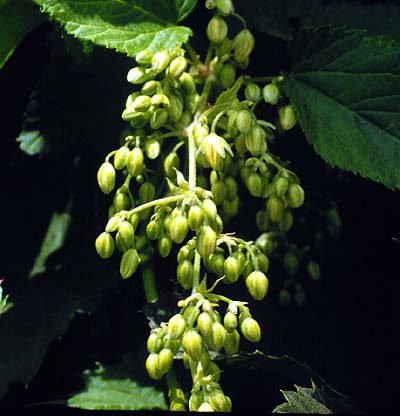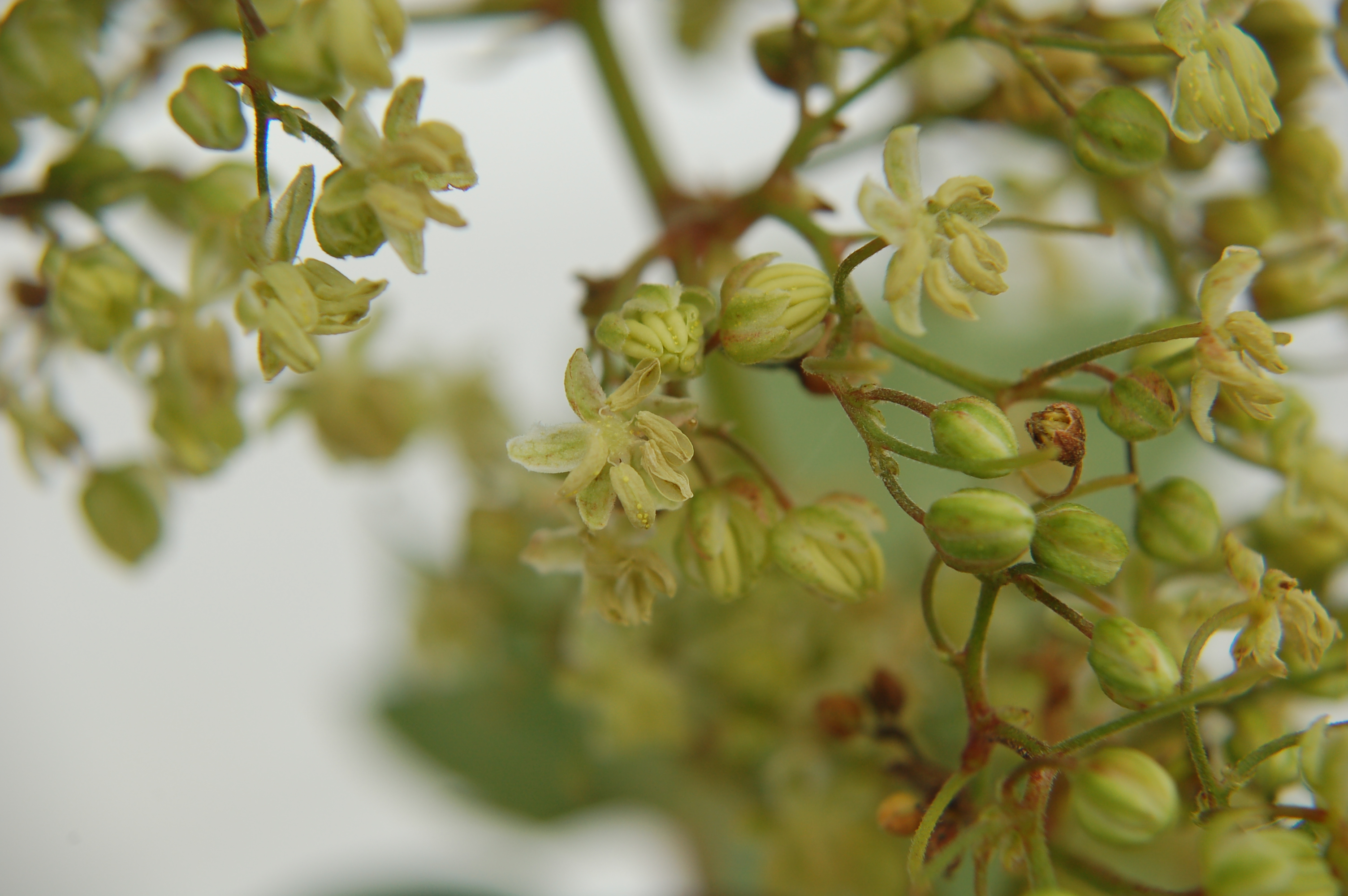Flowering - Inflorescence
Female flowers
Several shoots origin from the leaf axis. They develop to a hop cone or strobiles (Trolle). The hop cone is formed by so called bracts, which are leaf like structures souring the axis. If pollination was successful under each bract a little single nut developes.
Hop cone



Bract with a single nut
Lupulin, also called hops flour, is found in the hop cones and contains several different ingredients (compounds). For example: Resins, Alpha- and Beta-acids, cohumulon and colupulon, the bitter compounds, oils, myrcene, Beta-Carophylls, Hummules, Beta-Seline, Alpha-Seline and other aromatic flavorings, to list just a few.
Hops is mainly used for the production of beer and to a lesser extend needed for the pharmacy and food industry. Therefore, the breeding of different hops cultivars is mainly aimed to better beer production.

Lupulin
Male Flowers

male flowers
 male flowers
male flowers
Male flowers as spore suppliers for wind pollination.
Hops are one of the so-called "wind pollinators". The pollen is carried through the air by the wind. When pollen hits the stigmas of the female flowers, pollination takes place. Hops are therefore not dependent on insects, birds or other animals to distribute the pollen.
Accordingly, the female flowers are visually quite inconspicuous. If you want to use hops for decoration or continue to use the ingredients of the umbels, you have to make sure that the female flowers are NOT fertilized and that no seeds can form. The reasons are simple: fertilized flowers also focus on the optimal development of offspring. The energy-rich substances are used and consumed for this purpose. The umbel ripens quickly, turning yellow and brown and unsightly as the seed matures. The resins, acids and oils of the lupulin glands are required for the use of hops in beer.
When the seed ripens, however, these are consumed and a protein-rich nut is formed. This "protein bomb" severely disrupts the brewing process! During fertilization, the genetic information of the male pollen donor and the female hop plant is mixed. This process, which makes sense from an evolutionary point of view, causes problems in the preservation of hop varieties. The genetic information on components, growth characteristics, resistances and even the sexual characteristics that male pollen brings with it cannot be measured and is therefore completely unknown. However, since only the components of the female inflorescence are used in hops, it is crucial to preserve the genetic properties. Producing and sowing hop seeds therefore only makes sense in hop breeding!
(sorry for the automatic translation by Google as long as the german text is not translated by a natural speaker)
